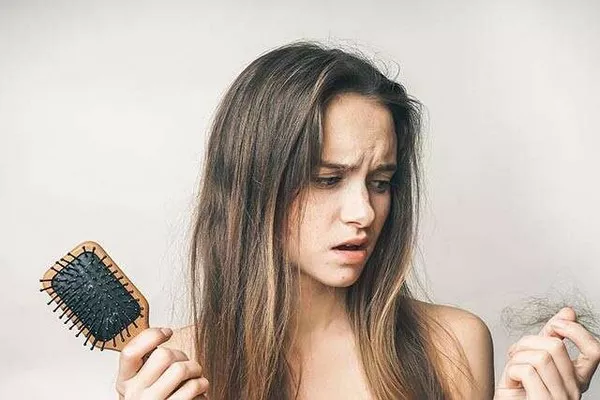Thinning hair is a common concern that affects millions of women worldwide. While hair loss is often associated with aging or genetics, it can also occur due to various underlying causes. Understanding these culprits is crucial to effectively addressing and managing thinning hair. In this article, we will delve into the most common factors contributing to hair thinning in women, shedding light on the potential remedies available.
I. Hormonal Imbalances: The Impact of Hormones on Hair Health
Hormonal imbalances can significantly contribute to hair thinning in women. The hormonal fluctuations experienced during various life stages, such as pregnancy, childbirth, menopause, and the onset of certain medical conditions, can disrupt the natural hair growth cycle. In particular, excessive production of the androgen hormone dihydrotestosterone (DHT) can lead to the shrinking of hair follicles and subsequent hair loss. Conditions such as polycystic ovary syndrome (PCOS) and thyroid disorders can also trigger hormonal imbalances, leading to thinning hair.
II. Nutritional Deficiencies: Nourishing Your Hair from Within
A lack of essential nutrients can have a detrimental effect on hair health, resulting in thinning and brittle hair. Inadequate intake of vitamins, minerals, and proteins required for hair growth can weaken the follicles, leading to hair loss. Iron deficiency, often associated with anemia, can hinder the delivery of oxygen to the hair follicles, negatively impacting their health. Additionally, deficiencies in biotin, zinc, vitamin D, and omega-3 fatty acids can all contribute to hair thinning. Maintaining a well-balanced diet rich in these nutrients is crucial for promoting healthy hair growth.
III. Stress and Emotional Factors: The Mind-Body Connection
Chronic stress and emotional factors can take a toll on overall health, including hair quality and growth. Telogen effluvium, a condition characterized by excessive hair shedding, can be triggered by significant emotional or physical stress. High levels of stress hormones disrupt the hair growth cycle, pushing more hair into the shedding phase. Additionally, conditions such as trichotillomania, a hair-pulling disorder often associated with anxiety, can lead to patchy hair loss. Managing stress through relaxation techniques, therapy, and self-care practices can help minimize the impact on hair health.
IV. Styling Habits and Hair Treatments: Beauty Practices Gone Wrong
Certain hairstyling habits and treatments can cause mechanical damage to the hair shaft, leading to hair thinning over time. Excessive heat from styling tools, such as straighteners and curling irons, can weaken the hair, making it prone to breakage. Tight hairstyles, like ponytails and braids, can put excessive tension on the hair, leading to traction alopecia. Chemical treatments, including perming, relaxing, and excessive dyeing, can also damage the hair shaft and affect its thickness. Adopting gentle styling practices and minimizing the use of harsh chemicals can help preserve hair health.
V. Medical Conditions and Medications: The Impact of Illness and Treatment
Certain medical conditions and medications can contribute to hair thinning as a side effect. Autoimmune disorders like alopecia areata cause the immune system to attack hair follicles, resulting in patchy hair loss. Scalp infections, such as ringworm, can also lead to temporary hair loss. Additionally, medications used for chemotherapy, blood thinners, antidepressants, and hormonal therapies may have hair loss as a potential side effect. Consulting with a healthcare professional is essential to explore alternative treatment options and minimize the impact on hair health.
VI. Genetic Predisposition: Inheriting Hair Thinning
Family history plays a significant role in determining the likelihood of experiencing hair thinning. Female pattern hair loss, also known as androgenetic alopecia, is a hereditary condition that affects millions of women. It is characterized by a gradual thinning of the hair, primarily at the crown and along the part line. Genetic factors influence the sensitivity of hair follicles to androgens, specifically DHT, which leads to miniaturization of the follicles over time. While genetic predisposition cannot be prevented, early intervention and treatments can help slow down the progression of hair loss.
VII. Age and Menopause: Changes in Hair with Time
As women age, hormonal changes associated with menopause can have a significant impact on hair health. The decrease in estrogen levels and the increase in androgen hormones can lead to hair thinning and loss. Estrogen helps promote hair growth, while androgens can shrink hair follicles. Menopausal hair thinning is often characterized by a diffuse thinning of the hair across the scalp. Additionally, the aging process itself affects the overall quality and texture of the hair, making it appear thinner and more brittle. Adopting a comprehensive approach that includes lifestyle changes and targeted treatments can help manage hair thinning during menopause.
VIII. Poor Scalp Health: The Foundation for Healthy Hair
A healthy scalp is crucial for maintaining optimal hair growth. Issues such as dandruff, scalp psoriasis, or excessive oiliness can disrupt the hair follicles’ functioning and impede hair growth. The buildup of sebum, dead skin cells, and product residue can clog the follicles, leading to hair thinning. Additionally, conditions like seborrheic dermatitis can cause inflammation and irritation, affecting the scalp’s ability to support healthy hair growth. Maintaining good scalp hygiene, using appropriate shampoos and conditioners, and seeking professional scalp treatments when necessary can help promote a healthy environment for hair growth.
Conclusion:
Thinning hair in women can be attributed to various factors, ranging from hormonal imbalances and nutritional deficiencies to stress, styling habits, medical conditions, and genetics. Understanding the underlying causes is crucial for adopting effective strategies to address and manage hair thinning. Whether through lifestyle modifications, dietary changes, medical interventions, or specialized treatments, women can take proactive steps to support hair health and minimize the impact of thinning hair. By prioritizing overall well-being, maintaining a healthy scalp, and seeking professional advice, women can embrace solutions that restore confidence and promote healthy, vibrant hair.

